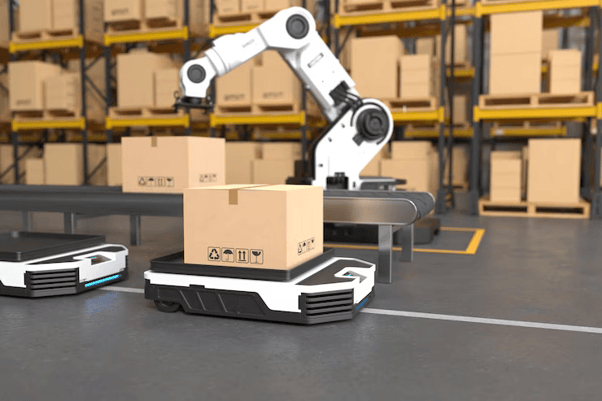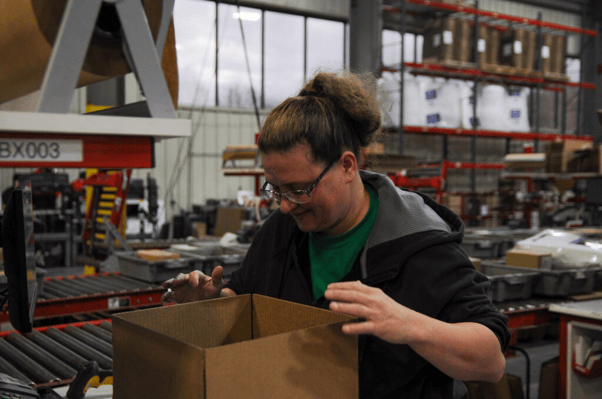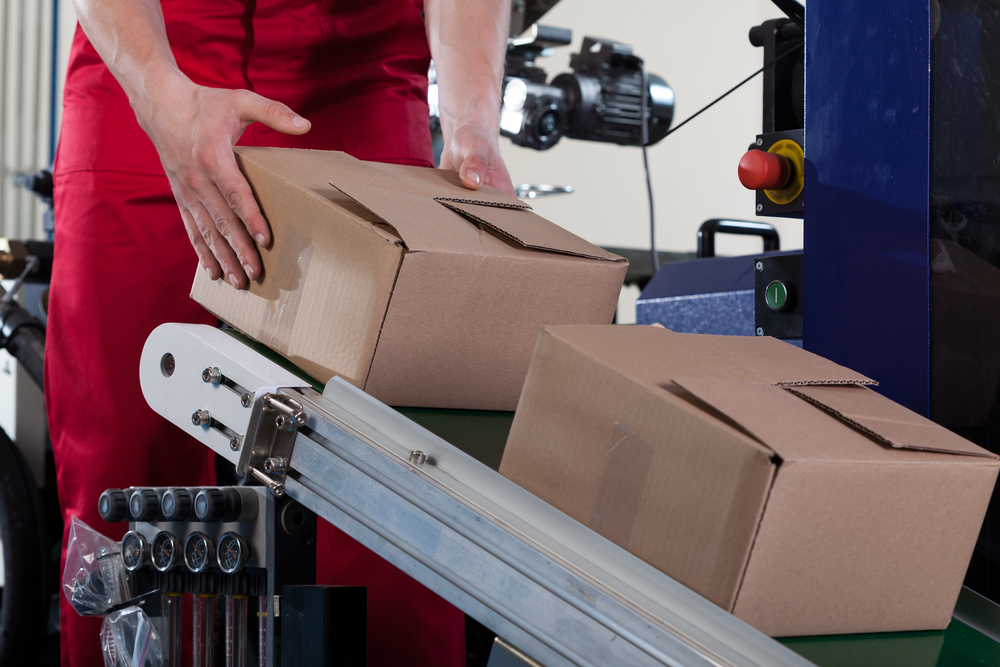The Future of Warehousing: Automation and Robotics in Logistics
Imagine a bustling warehouse where robots gracefully glide between towering shelves, swiftly picking and packing products with remarkable precision. ...
3 min read
 Alex Selwitz
:
May 30, 2023 5:22:44 PM
Alex Selwitz
:
May 30, 2023 5:22:44 PM
Finally, you have your own eCommerce business you’ve always wished for, and you decided to implement an automation system for your warehousing operations.
You are probably asking yourself:
"What factors should I consider when choosing warehouse automation solutions?"
That’s exactly what this article will help you with: it highlights four key factors to keep in mind when choosing an automation system for your warehouse operations — from basics like warehousing operational needs to safety and security issues.
 Source: Freepik
Source: Freepik
Warehouse operations keep transforming as different digital technologies mature. Changing consumer behavior, dynamic supply chains, and labor shortages keep increasing the demand for warehouse automation.
There is a plethora of warehouse automation technologies, each with proven benefits: they enhance productivity and maximize operational efficiencies in different facilities.
Integrating high-tech warehousing hardware, the Internet of Things (IoT), and multiple software systems is pivotal for streamlining warehouse services.
1. Warehousing Operational Needs
2. Scalability & Flexibility of Technologies
RELATED:
5 TRENDS THAT WILL STAND OUT IN WAREHOUSE MANAGEMENT THROUGHOUT 2023
The scale and complexity of warehousing operations vary from one facility to another. Before choosing an automation system, warehouses should evaluate internal processes and specify their operational needs and goals.
Evaluate bottlenecks associated with inventory management, order fulfillment, utilization of storage spaces, and dispatch operations.
Companies should also determine the volume of goods moving in and out of warehouses at any instance.
High-traffic warehouses moving multiple inventories can benefit from robotic arms, automated storage, and retrieval systems (AR/AS), or conveyor belts.
On the other side, e-commerce fulfillment centers can leverage automated guided vehicles (AGV), warehouse drones, and autonomous mobile robots (AMR) to pick and prepare orders for dispatch.
For less complex orders, warehouses use barcode scanners, radio frequency identification tags, and a wide range of industrial wearable devices.
If the company’s needs require managing sensitive, hazardous, or fragile goods, investing in specialized robots with advanced handling capabilities should be a priority.
Automation systems complement existing warehouse management solutions, including inventory management solutions, fleet management systems, and enterprise resource planning.
That demands seamless interoperability and integration of advanced automation systems with existing warehouse solutions and equipment.
Depending on the company's needs, automation systems can be expanded and reconfigured, allowing the installation of newer hardware and scaling up or down.
This can include automation systems like modular robots customized to perform more than one task when the order volumes rise.
Companies can enjoy affordable warehouse management by investing in cloud-based or software-based automation solutions.
These are customizable solutions whose features can be expanded or contracted for each warehouse depending on the complexity of workflows and type of material handling hardware.
Warehouses can access advanced automation features and functionalities while accessing the latest digital technologies and innovations.
These systems have exceptional data handling capabilities, enabling warehouses to scale operations based on factual market and operational insights.
RELATED:
ONE OF THE BIGGEST PROBLEMS EXPERIENCED IN WAREHOUSES AND HOW TO SOLVE IT
 Source: Red Stag Fulfillment
Source: Red Stag Fulfillment
Before implementing warehouse automation technologies, evaluate their physical and virtual safety. These systems should complement safety standards in warehouses and enclosed spaces — not be a source of workplace hazards or exacerbate workplace injuries and accidents.
Automation hardware requires adequate and reliable safety features. Ensure moving parts contain safeguards like physical barriers and emergency stop buttons.
Additionally, they should have compliant fail-safe systems and safety interlocks to prevent injuries during emergency breakdowns.
Robots require collision detection systems consisting of sensors and object identifiers to identify obstacles and trigger safety controls. Automation systems can also leverage feedback control loops to adjust operations based on real-time warehouse conditions.
Having in mind that most systems are interconnected via the internet, they are prone to cyber-attacks.
Therefore, warehouses require a robust cybersecurity plan when implementing the automation system.
System security should outline data encryption protocols, system access controls, and frequency of software upgrades to deter system breaches and potential security concerns.
RELATED:
HOW TO USE SCANNER DATA FOR EFFICIENT WAREHOUSE OPERATIONS
Understanding the support needs of each automation system is vital when choosing a solution for any warehouse because it maximizes automation system safety, efficiency, and reliability.
These include regular maintenance, software and hardware upgrades, and part replacements. Lifetime support encompasses future upgrades, even as facilities explore ways to optimize productivity by integrating Industry 5.0 technology in operations.
Specify and document maintenance needs for each automation system in a warehouse: some companies may establish in-house maintenance teams and invest in relevant asset management technologies, while others outsource maintenance.
Also, warehouses can lease automation systems using models like Robots as a Service (RaaS) — this ensures they receive full-time expert support and delegate asset performance risks to equipment or technology vendors.
Keep in mind that warehouses require a long-term staff training plan to ensure all employees know how to work with automated systems. Another benefit is that it enhances their technical knowledge ensuring they can successfully identify and rectify defects.
Automating warehouse operations takes time and requires considerable financial investments.
As a starting point, use available data to understand the strengths and weaknesses of existing warehouse management technologies.
Select automation solutions with substantial impacts on workflows and implement them in phases. Before scaling up the automation system, monitor the performances of each.
The focus should be on continuous improvement of the warehouse automation system reliability and on teaming up with experts when facing implementation challenges.

Imagine a bustling warehouse where robots gracefully glide between towering shelves, swiftly picking and packing products with remarkable precision. ...

Supply chain waste is a major problem that businesses of all sizes face. It can lead to environmental damage, financial losses, and a decrease in...

Due to the changing and developing technology, the production and logistics processes have also required to be simplified. With the effect of the...